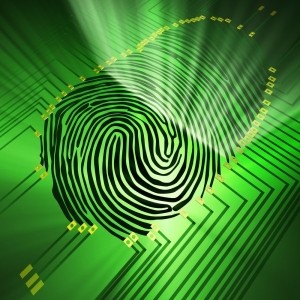 The payments industry loves the promise of new technology whether it’s mobile payments, fingerprints, facial recognition or other biometric payments. But the challenge of moving from test markets to the real world is always present.
The payments industry loves the promise of new technology whether it’s mobile payments, fingerprints, facial recognition or other biometric payments. But the challenge of moving from test markets to the real world is always present.
Visa, Mountain America Credit Union, and Fingerprints AB ran a pilot project with 200 consumers testing a new biometric payments card for 60 days. The results were encouraging but ran into some unexpected practical payments situations.
Barriers to biometric cards
Several use cases showed the limits to real-world biometric payments. For example, payments at restaurants and bars often require taking cards away to a payments terminal and returning with payment verification or a signature slip.
“For example, transactions at drive-ups and many restaurants in the US still involve giving the card to a cashier or waiter, rather than bringing the card terminal to the consumer,” Matt Farrow, assistant vice president of payment and cards services at the Utah-based Mountain America Credit Union told Payments Source.
 There are other hurdles in getting customers to adopt biometric payments according to Ron van Wezel, an Amsterdam-based senior analyst at Aite Group.
There are other hurdles in getting customers to adopt biometric payments according to Ron van Wezel, an Amsterdam-based senior analyst at Aite Group.
“First, will consumers change their behavior and learn the new ‘scan and pay’ experience? It will heavily depend on how smooth and easy this experience will be. Fingerprint technology has some known issues here,” van Wezel said. “Second, biometric cards are much more expensive at the moment so will issuers be ready to foot the bill until mass adoption takes place?”
Cost and other use cases
 Biometric cards cost up to three times more to produce than standard EMV card according to experts at Fingerprints AB. The company says its research shows more than half of US consumers would pay extra for a biometric bank card.
Biometric cards cost up to three times more to produce than standard EMV card according to experts at Fingerprints AB. The company says its research shows more than half of US consumers would pay extra for a biometric bank card.
More affluent bank customers would definitely be a target for biometric cards. Also, government identity cards, social benefits programs, medical identification and programs for unbanked customers could also be attracted to the advantages of biometric cards.
Mobile adoption is a factor
The advantage of a fingerprint stored on a card is that it provides a new, higher level of security and one not easily hacked by cybercriminals.
In the background, mobile payments also remain a practical solution that still doesn’t seem ready for prime time.
 eMarketer research shows 13.2% of the global consumers will use mobile payments by the end of 2018. By 2021, this figure is expected to reach 17.2%, a slow uptake compared to contactless cards.
eMarketer research shows 13.2% of the global consumers will use mobile payments by the end of 2018. By 2021, this figure is expected to reach 17.2%, a slow uptake compared to contactless cards.
In fact, in the UK only 1% of consumers use mobile payments over cards or cash for everyday purchases such as meals and clothing.
It seems as if biometric cards are a practical solution combining the consumer’s comfort with payment cards, growing adoption of contactless cards, and providing a higher level of concern for mobile payments security.
Adoption of biometric cards will vary by market
In more mature markets, increased security introduced fraud may be stronger drivers of adoption. In emerging markets, proof of identity may be a bigger outcome. But in each case, biometric technology can provide an attractive solution despite different outcomes.
 Phil Sealy, analyst at ABI Research says, “Not only will the introduction of biometric smart payment cards be the innovative step the industry needs to combat fraud and security concerns by future-proofing the traditional payment card, but the technological awakening will raise the importance and profiles of previously overlooked, yet agile, players in the ecosystem.”
Phil Sealy, analyst at ABI Research says, “Not only will the introduction of biometric smart payment cards be the innovative step the industry needs to combat fraud and security concerns by future-proofing the traditional payment card, but the technological awakening will raise the importance and profiles of previously overlooked, yet agile, players in the ecosystem.”
Biometrics are coming. There are just a few business use cases and bumps along the road that innovators will need to resolve for wider adoption to occur.

